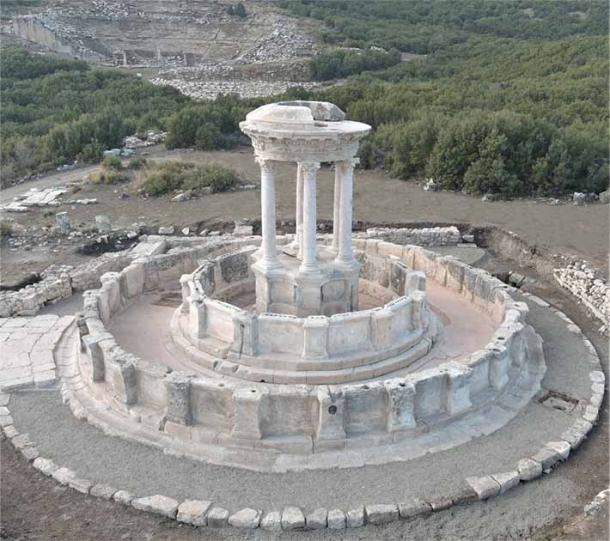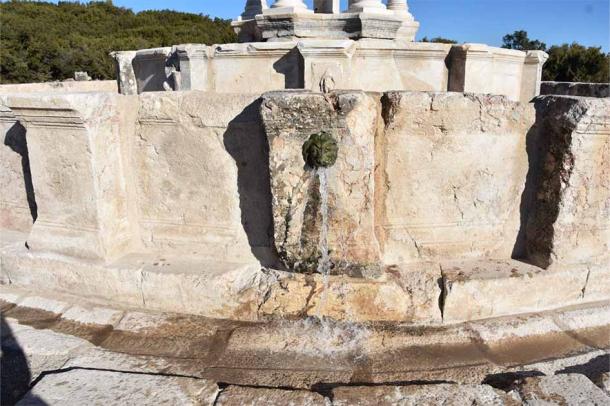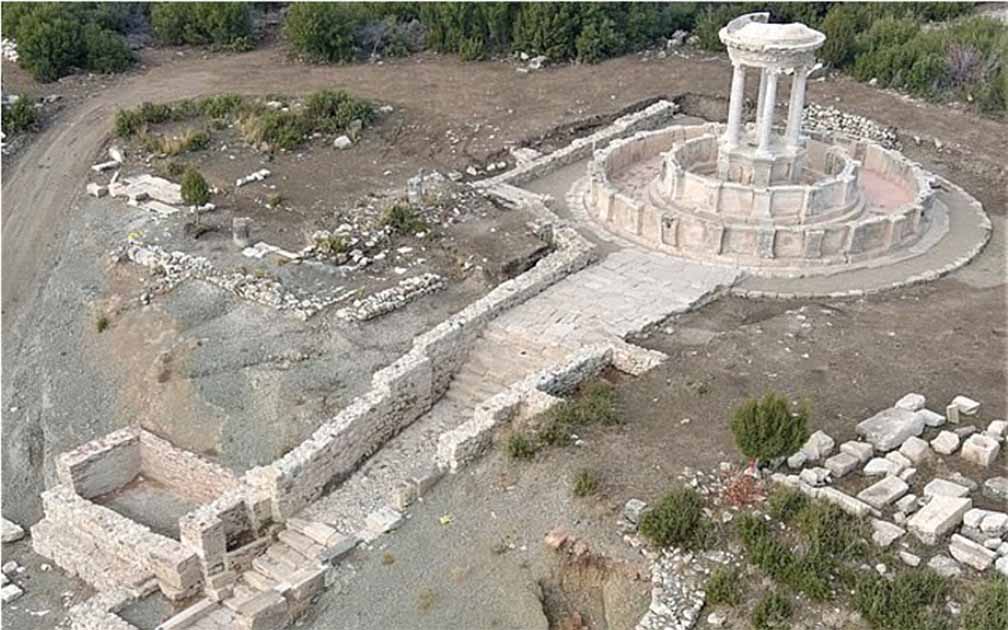City of Gladiators Earthquake Shattered Fountain Flows After 2,000 Years
An ancient fountain that was destroyed in a 23 BC earthquake has been restored in Turkey's “City of Gladiators.' Now, the two millennia old water font is streaming drinkable water again, just as it did some 2,000-years ago.
Unearthing Turkey’s Ancient City Of Gladiators
The ancient city of Kibyra, or Cibyra Magna, is situated in the township of Gölhisar in the southwestern Burdur Province of Turkey. In ancient times it represented the capital city of an independent state known as Cibyratis, that lay just outside the north-western limits of the ancient province of Lycia, that thrived in Anatolia from 15-14th centuries BC, and as Lukka until 546 BC.
Strabo recorded Kibyra as having originally been settled by ‘Lydians,’ who were indigenous people in this region of Asia Minor. These people constructed over 100 stadiums and after the Roman general Lucius Licinius Murena defeated the ruler of Kibyra in 83 BC the city became part of the greater Roman province of Asia. Listed on the UNESCO World Heritage Tentative List, ancient Kibyra is known as the “City of Gladiators.” Now, archaeologists have announced that “a colossal fountain” has been restored and that it will “flow with fresh water for the first time in 2,000 years.”
- 5 Celebrity Gladiators of Bloodthirsty Ancient Rome
- Gladiatrix: Female Fighters Offered Lewd Entertainment in Ancient Rome

The restored fountain at Kibyra will flow again after a break of 2,000 years. (MAKU)
Piecing Together An Ancient Masterpiece
Dr. Sukru Ozudogru, an archaeologist at Mehmet Akif Ersoy University, recently told Anadolu Agency (AA) that his team of archaeologists have spent the past four months collecting “150 original fragments from the ruins.” Now, they have successfully “pieced the architectural masterpiece back together.” The “round-planned fountain” measures 15.24 meters (50 ft) in diameter by 7.92 (26 ft) high and after being built it was used for more than 600 years.
A report in Daily Mail says the team of archaeologists have also restored the original water supply system from the spring, so that the fountain now flows with drinkable water “just the way it did 2,000 years ago.”
Dr. Ozudogru described the water from the restored fountain as “spouting from the mouths of lion and panther.” Not only do these two animals feature heavily in Roman mythology but they are two of the animals that gladiators fought in the arenas. Incidentally, it was after the discovery of the “10,400-person stadium” that hosted hundreds of gladiatorial fights that Kibyra became known as the “City of Gladiators.”
- Gladiators: Ancient Romans Loved Their Deadly Games
- Roman Gladiators Were War Prisoners and Criminals, Not Sporting Heroes

The drinkable water flows through the mouths of a panther and a lion. (MAKU)
Rebuilding What Nature Attempted To Destroy
Blending both Roman and Byzantine architectural styles, during the 1000 years of the Roman empire the city became famous for its blood-thirsty gladiatorial contests. However, a 23 BC earthquake almost flattened Kibyra, and if it were not for diligent citizens in the aftermath rebuilding the giant fountain it would have been lost in time long ago.
The AA article said the restoration of the fountain and its two pools required “68 original architectural pieces and 24 imitation blocks produced from the original stone type.” Furthermore, it was observed that the original fountain featured one large circular pool and the second pool was added decades later. Dr. Ozudogru maintains that when the fountain was functional, some 2,000-years-ago, the two circular pools supplied potable water to four different parts of the city.
Sticking With The Original Plan
As far as aesthetics are concerned, fragmentary remains informed the researchers the original fountain was detailed with “elaborate statues of animals, huge columns and embossed friezes.” The archaeologists used two moldings taken from original sculptures that were both unearthed during recent excavations, and the originals are currently being exhibited in the Burdur Museum.
The researcher explained that in Roman times “Water was a mythological hero” that flowed into the two pools from the mouths of “lion and panther” statues. Relating these two animals to Roman mythology “Heracles lay on a panther skin and Dionysus, the god of wine, wore a lion skin," according to the professor. However, both of these animals were fought by gladiators in the 10,400-person stadium in Kibyra, which Akkurnaz explained “was a building designed for an assortment of blood-soaked spectacles, including gladiator fights and wild animal fights”.
Top image: The restored fountain at the Kibyra archaeological site in Turkey. Source: Mehmet Akif Ersoy University
By Ashley Cowie



















